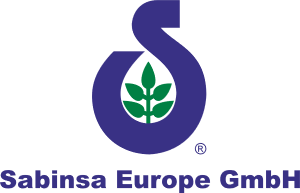Sabinsa Corporation is proud to introduce Venocin™, Sabinsa’s proprietary name for Horse chestnut extract. Two different grades of Venocin™ are available: an oral grade standardized to contain a minimum of 20% escin (for oral administration) and a cosmetic grade standardized to contain a minimum of 90% escin (for topical application). Both extracts are obtained from the seeds of the Horse chestnut (Aesculus hippocastanum L.) tree.
The Horse chestnut tree, indigenous to Asia and northern Greece, is now cultivated in many areas of Europe and North America. The fruit is made up of a spiny capsule containing one to three large seeds. Traditionally, the seeds, leaves, and bark, were used in medicinal preparations. More recently, horse chestnut extract (HCSE) is valued as a nutritional supplement beneficial to circulatory health. Horse chestnut seed extract is the traditional remedy for "chronic venous insufficiency" (CVI), varicose veins, hemorrhoids, and phlebitis (inflammation of the veins) in Europe, where the extract has been subjected to a number of clinical trials.1
The principal biologically active component of HCSE extract is escin, a triterpenic saponin mixture. It is known to help maintain healthy blood circulation and strengthen the capillaries and veins. HCSE is clinically proven to be beneficial to people suffering from varicose veins, spider veins, hemorrhoids and related circulatory problems or "chronic venous insufficiency".
A healthy circulatory system is important to general health maintenance. Thousands of tiny capillaries converging into veins and arteries wind their way through the human body carrying blood that transports vital oxygen, nutrients, enzymes, hormones and other biological essentials. If the walls of these blood vessels are damaged due to oxidative deterioration, a sedentary lifestyle, or factors such as over or under nutrition, the individual develops dilated and swollen veins.
In the United States, varicose veins are reported to affect over 50% of middle-aged adults.2 In literature, several causative factors are reported for CVI, varicose veins, spider veins and hemorrhoids2,3:
- Weakness of the veins or venous valves due to genetic factors,
- Excessive venous pressure due to straining during defecation (often induced by a low fiber diet),
- Long periods of standing, and/or heavy lifting leading to strain in the limbs,
- Damage to the veins or venous valves due to inflammation,
- Weakness of the vascular walls due to loss of structural integrity of the connective tissues.
European researchers have conducted a number of clinical studies over the past few decades. Pittler and Ernst 4,5 summarized these studies in a literature review to evaluate the evidence for or against the use of HCSE and isolated escin in the management of venous insufficiency.
Placebo-controlled trials suggest that treatment of CVI with Horse chestnut seed extract was effective in decreasing lower-leg volume and calf and ankle circumference in the subjects and offered protection against edema. The capillary filtration rate in patients who received HSCE was enhanced by 22% in one study. All five of the randomized control trials demonstrated the effectiveness of HCSE in the treatment of chronic venous insufficiency.
Evidence of the efficacy and safety of various formulations of topical escin has been obtained in preclinical and clinical studies. Over thirteen clinical studies were performed in Europe.6-8
Sources:
- Blumenthal M., Busse W.R., Goldberg A., et al, eds. (1998) The Complete Commission E Monographs: Therapeutic Guide to Herbal Medicines. Boston, MA: Integrative Medicine Communications, 148-149.
- Murray, M.T. (1999) Medicine Online, July. http://www.nat-med.com/
- Vanhoutte, P.M., et al. (1997) Angiology 48(7):559-67.
- Pittler, M.H. and Ernst, E. (1998) Arch. Dermatol., 134:1356-60.
- Apgar, B. (1999) American Family Physician, March 15, pp. 1623.
- Calabrese, C. and Preston, P. (1993) Planta Medica 59:394-397.
- Rehr, D. et al. (1996) Arzneim-Forsch/Drug Res. 46(1):483-487.
- Bombardelli, E., et al. (1989) Fitoterapia 60, Supplemento al n. 1, 39.







